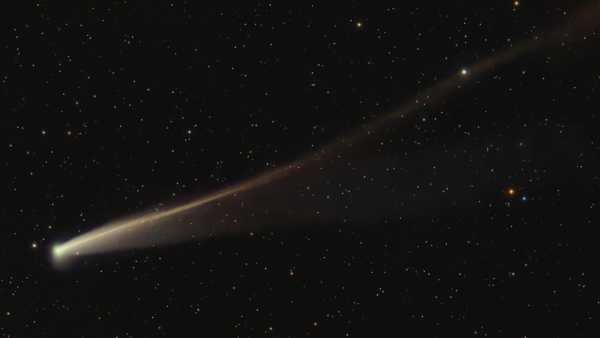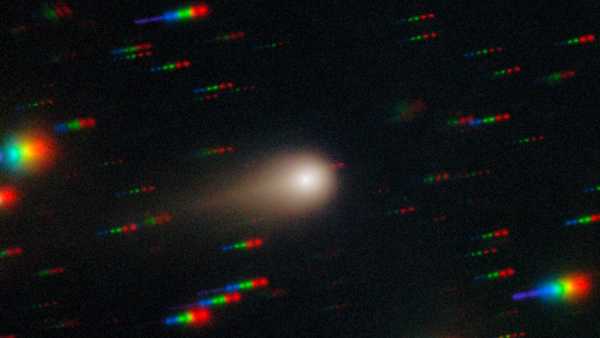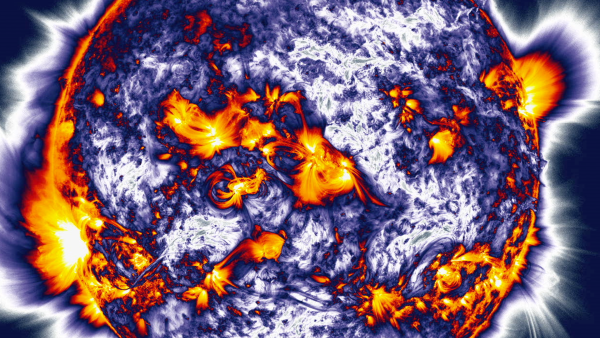
A new NASA study suggests that solar activity will remain high in the coming decades, potentially leading to more dangerous space weather. (Image courtesy of NASA Goddard)
NASA scientists warn that the Sun may be “waking up” after a short period of relative inactivity, contradicting previous understanding of our star. If true, we could be in for decades of potentially dangerous space weather.
The Sun follows a roughly 11-year solar activity cycle, beginning with a prolonged period of quiescence known as solar minimum and progressing to an explosive peak known as solar maximum, when our star frequently unleashes powerful solar storms. This pattern is known as the “sunspot cycle,” as the number of dark spots on the Sun's surface waxes and wanes depending on solar activity. The sunspot cycle, in turn, is governed by a longer 22-year cycle known as the Hale cycle, during which the Sun's magnetic field completely reverses and then returns to its previous position.
You may like
-

A giant 'S' shape has been spotted on the Sun just before a 'dark eruption' casts a fiery shadow on Earth.
-

A 'space hurricane' captured a storm raging over the North Pole on one of the calmest sunny days
-

A 'cannibal' solar storm could cause auroras over 18 US states this Labor Day.
In the early 2000s, the trend toward declining solar activity led some scientists to speculate about the possible onset of a new “deep solar minimum.” This theory gained currency after the last solar maximum in 2013–2014, which was significantly weaker than previous cycles. However, the current solar activity cycle, which has just reached its peak, has completely disproved this theory.
In a new study published September 8 in The Astrophysical Journal Letters, researchers analyzed several solar activity indicators, including solar wind, magnetic field strength, and sunspot number, and found that they have shown an upward trend since about 2008 and may continue to increase in future cycles, suggesting that the deep solar minimum theory is finally and irrevocably outdated.
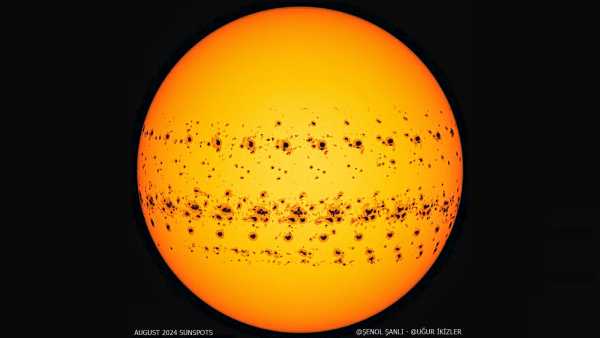
The roughly 11-year solar activity cycle is named for sunspots, which appear and disappear depending on solar activity. This time-lapse image shows all the sunspots that appeared in August 2024, when their number peaked.
“All the signs pointed to the Sun entering a prolonged period of low activity,” said Jamie Jasinski, lead author of the study and a plasma physicist at NASA's Jet Propulsion Laboratory in Southern California, in a NASA statement. “So it was a surprise to us that this trend had reversed. The Sun is slowly waking up.”
We are currently approaching the end of the last solar maximum, which officially began in early 2024, and it is not going as expected.
When the current solar cycle began in late 2019, experts at the Space Weather Prediction Center (SWPC), which includes scientists from NASA and the National Oceanographic and Atmospheric Administration (NOAA), predicted that solar maximum would likely begin sometime in 2025 and would be comparable to the previous, weaker cycle.

The maximum number of visible sunspots during the previous solar maximum was the lowest in nearly 100 years.
However, as the current cycle progressed, it quickly became clear that this was not the case, and that solar maximum would occur earlier and be much more intense than initially predicted. SWPC scientists later acknowledged their error, publishing their first updated forecast, which coincided with the solar maximum.
You may like
-

A giant 'S' shape has been spotted on the Sun just before a 'dark eruption' casts a fiery shadow on Earth.
-

A 'space hurricane' captured a storm raging over the North Pole on one of the calmest sunny days
-

A 'cannibal' solar storm could cause auroras over 18 US states this Labor Day.
Since then, the Sun has seen its highest number of sunspots in 20 years, as well as a record number of powerful X-class flares—the most powerful type of explosion the Sun can produce.
During the current maximum, Earth also experienced several major geomagnetic storms, or disturbances in the planet's magnetic field. The most notable of these was an “extreme” event in May 2024, which produced one of the brightest auroras in centuries and caused over $500 million in damage.

The Sun often spews out solar storms during its peak activity. This “dark” coronal mass ejection occurred on September 7, 2025, triggering a minor geomagnetic storm on Earth.
A new study warns that what we've observed in the past few years will likely become the “status quo” in the coming decades. This could be especially problematic as humanity has become much more reliant on technologies vulnerable to space weather, such as power grids, GPS-controlled equipment, and satellites in low-Earth orbit, which can be disabled by solar storms.
RELATED STORIES
We are rapidly approaching the Sun's “war zone”—and it could be even worse than solar maximum, experts warn.
— 'It's like they're possessed by a demon': Geomagnetic superstorms are causing tractors to dance on US farms.
— No, you didn't see a solar flare during a total eclipse, but you could have seen something equally special.
It's currently unclear why solar activity has surged over the past few decades or what might be driving its current resurgence: “Long-term trends are much less predictable, and we don't fully understand them yet,” Jasinski said.
Another study earlier this year suggested that the recent surge in activity may be part of a little-known and understudied 100-year solar cycle known as the Gleissberg centennial cycle. However, the latest study makes no mention of this at all.
NASA TOPICS Solar Maximum

Harry Baker, Social Link Navigation, Senior Staff Writer
Harry is a senior writer for Live Science based in the UK. Before becoming a journalist, he studied marine biology at the University of Exeter. He covers a wide range of topics, including space exploration, planetary science, space weather, climate change, animal behavior, and paleontology. His recent work on solar maximum won the 2024 Aerospace Media Awards in the Best Space Story category and was shortlisted for the 2023 NCTJ Awards for Excellence in the Breaking News category. He also writes Live Science's weekly series, “Earth from Space.”
You must verify your public display name before commenting.
Please log out and log back in. You will then be asked to enter a display name.
Exit Read more

A giant 'S' shape has been spotted on the Sun just before a 'dark eruption' casts a fiery shadow on Earth.

A 'space hurricane' captured a storm raging over the North Pole on one of the calmest sunny days
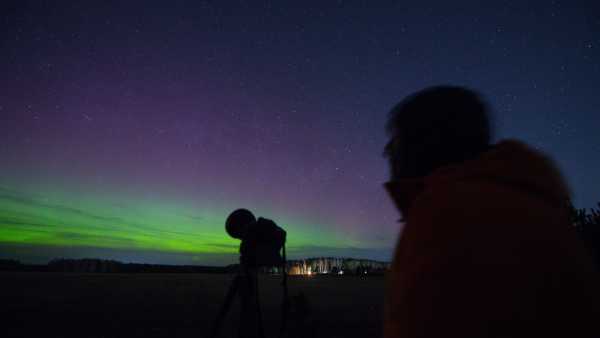
A 'cannibal' solar storm could cause auroras over 18 US states this Labor Day.

Parker Solar Probe captured record-breaking images of the Sun during its record-breaking flight.

IBM and NASA are creating a first-of-its-kind artificial intelligence capable of accurately predicting powerful solar flares.

A solar tornado rages across the Sun, spewing out a giant plume of plasma.
The Sun's latest news

A giant 'S' shape has been spotted on the Sun just before a 'dark eruption' casts a fiery shadow on Earth.

A 'cannibal' solar storm could cause auroras over 18 US states this Labor Day.
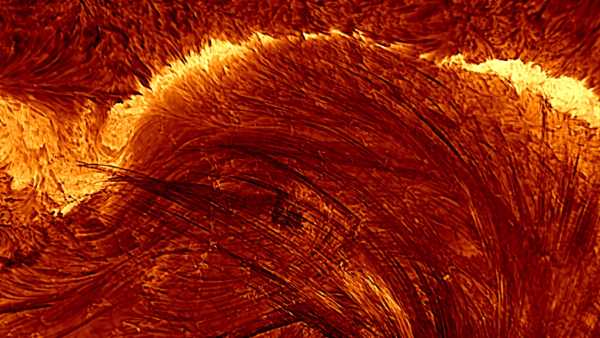
Scientists have released the most detailed photograph of a solar flare ever taken.

A solar tornado rages across the Sun, spewing out a giant plume of plasma.

NASA's spacecraft captured images of a lunar transit and an Earth eclipse on the same day – see the photos.

Behold the Beast: A giant, animal-shaped plasma plume 13 times wider than Earth hangs above the Sun.
Latest news

The oldest known dinosaur with a domed head has been discovered protruding from a rock in Mongolia's Gobi Desert.

A 'rare' ancestor reveals how giant flightless birds reached distant lands.

'The Sun is slowly waking up': NASA warns that extreme space weather could become even more extreme in the coming decades

Scientists have invented a new sunscreen made from pollen.

An anthropologist claims the hand positions on a 1,300-year-old Mayan altar have a deeper meaning.

A laboratory study shows that even short-term exposure to air pollution can cause inflammation of the placenta.
LATEST ARTICLES

1What are “magic numbers” in nuclear physics?
Live Science magazine is part of Future US Inc., an international media group and leading digital publisher. Visit our corporate website.
- About Us
- Contact Future experts
- Terms and Conditions
- Privacy Policy
- Cookie Policy
- Accessibility Statement
- Advertise with us
- Web notifications
- Career
- Editorial standards
- How to present history to us
© Future US, Inc. Full 7th Floor, 130 West 42nd Street, New York, NY 10036.
var dfp_config = { “site_platform”: “vanilla”, “keywords”: “type-news-trending,serversidehawk,videoarticle,van-enable-adviser-
Sourse: www.livescience.com



